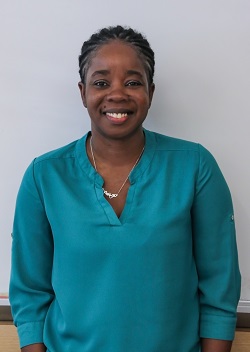NWEA MAP Data at LPS Richmond
Entry into the academic numeracy classes is determined by student readiness for high school math. Sophia Thomas, teacher, talks about how LPS uses MAP assessments to assess students.

Sophia Thomas: At the start of the school year, it’s a part of what they have to do to enter the school. They have to take the MAP. A lot of kids, based on their placement, end up in my room. At the start of the year I have them set a goal based on their GLE, wherever you're at. We are working as a class to make sure that, on average, we are all at the ninth grade level because they're at varying places. When they started out, on average, we were in the middle of fifth grade. So, we're working to, by the end of the ninth grade, have an average of ninth grade. That doesn't mean that all kids are going to be at the ninth grade level but we're really pushing for that. A lot of times when we're starting, reference is made to that because they take it three times. They've done it twice already. They're going to do it one more time at the end of the year to see where they're finally ending up. I'll make reference to that. We want to be at the ninth grade level. That is according to the MAP. We also want to improve on numerous skills at the same time.
Explore More

P-CCS' Approach to Student-Centered Virtual Learning
Through their participation in TLA's Strategy Lab: Virtual & Hybrid program, Plymouth-Canton Community Schools' Virtual Academy designed...

Increasing Engagement and Work Completion Through Advising and Mentoring (KIPP DC)
Through their participation in TLA's Strategy Lab: Virtual & Hybrid program, KIPP DC designed and piloted a program to help teachers...

West Chester Area School District's Approach to Mastery and Expectations
Through their participation in TLA's Strategy Lab: Virtual & Hybrid program, West Chester Area School District's Cyber Program sought to...